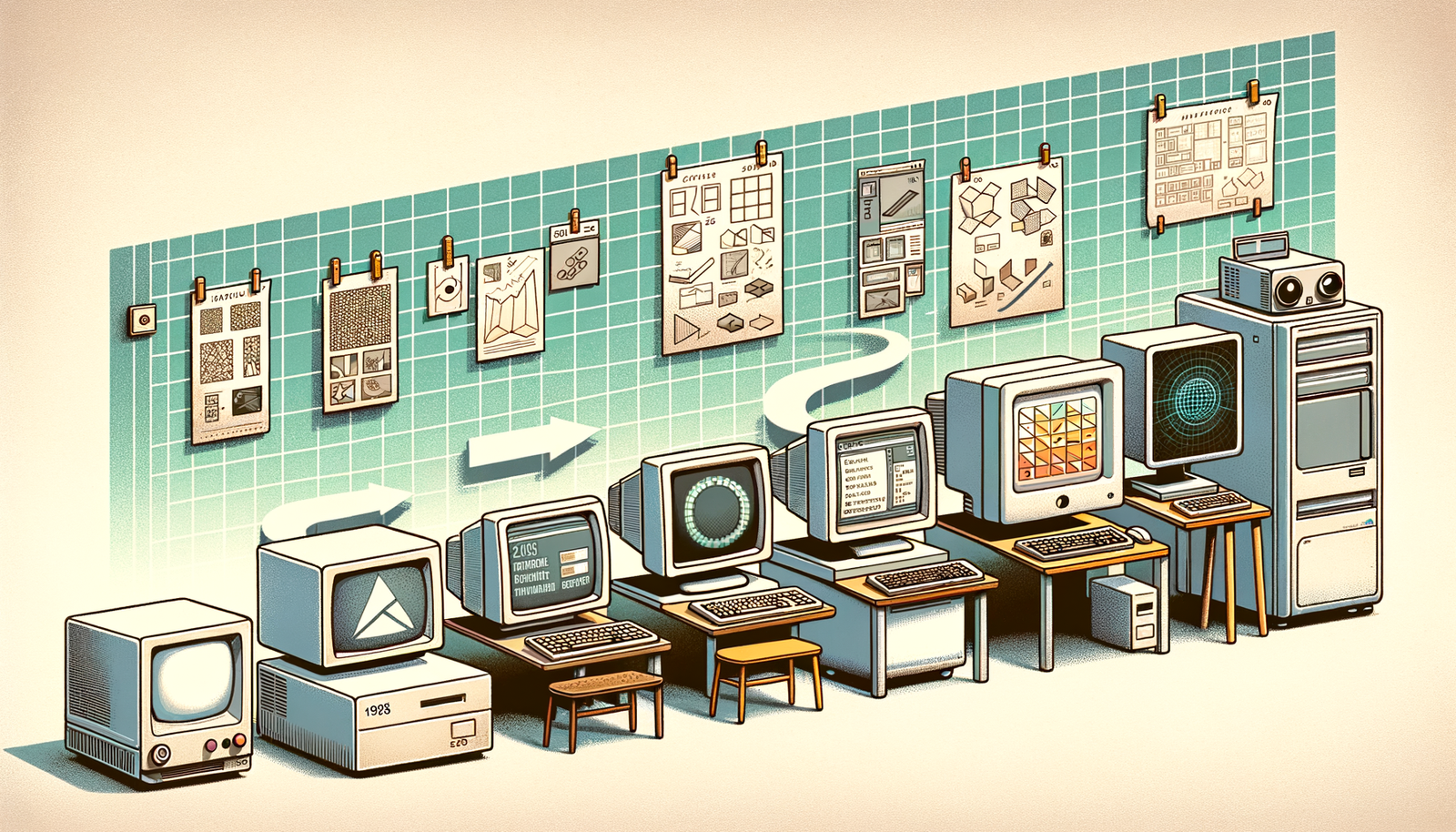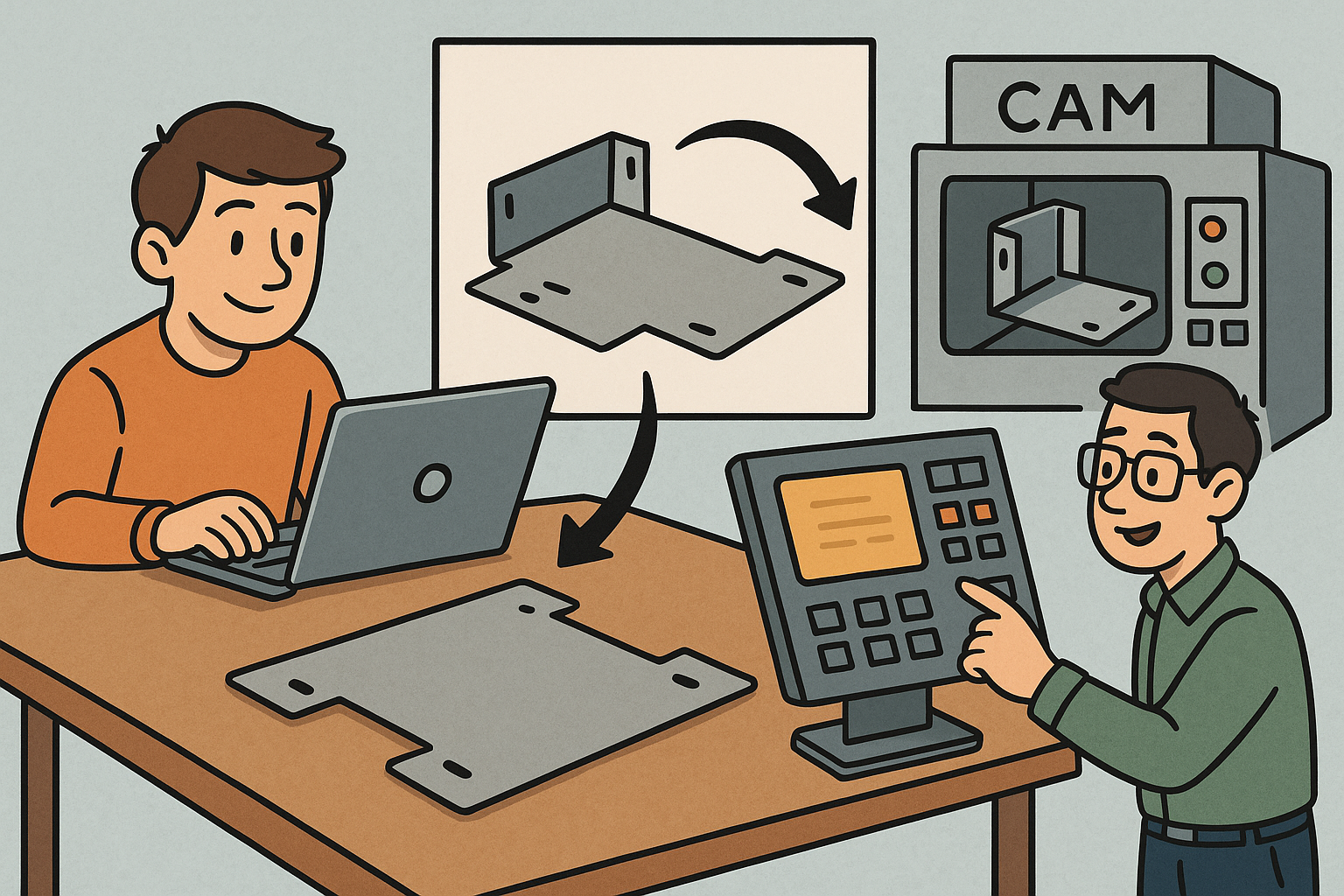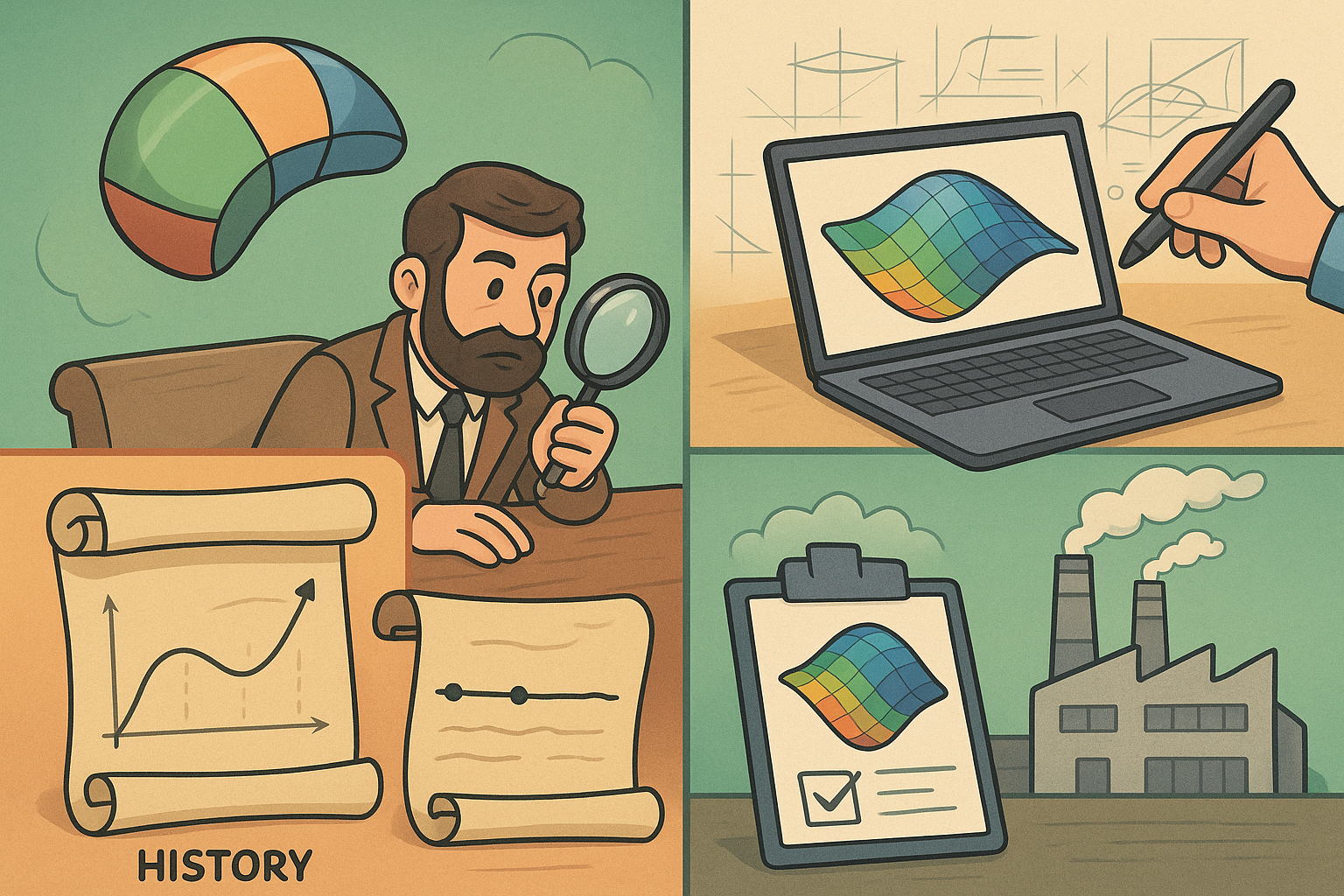Your Cart is Empty
Customer Testimonials
-
"Great customer service. The folks at Novedge were super helpful in navigating a somewhat complicated order including software upgrades and serial numbers in various stages of inactivity. They were friendly and helpful throughout the process.."
Ruben Ruckmark
"Quick & very helpful. We have been using Novedge for years and are very happy with their quick service when we need to make a purchase and excellent support resolving any issues."
Will Woodson
"Scott is the best. He reminds me about subscriptions dates, guides me in the correct direction for updates. He always responds promptly to me. He is literally the reason I continue to work with Novedge and will do so in the future."
Edward Mchugh
"Calvin Lok is “the man”. After my purchase of Sketchup 2021, he called me and provided step-by-step instructions to ease me through difficulties I was having with the setup of my new software."
Mike Borzage
Design Software History: The Evolution of Autodesk: From AutoCAD to Cutting-Edge Design Innovations
September 09, 2024 5 min read


The Founding of Autodesk
Inception and Founding
Autodesk was founded in 1982 by John Walker along with a group of co-founders. The inception of Autodesk marked the beginning of a new era in computer-aided design (CAD) software. The initial vision for the company was ambitious yet clear: to democratize design and CAD software, making it accessible not only to large corporations but also to individual designers and smaller firms.
The founding team comprised of programmers and engineers who were passionate about leveraging the computing power of the burgeoning personal computer (PC) market. They recognized the untapped potential in creating software that could harness this power to revolutionize design processes across various industries.
Early Challenges and Opportunities
The early 1980s represented a dynamic period in the tech industry. CAD software was predominantly available on expensive minicomputers and mainframes, making it a luxury for small businesses. This landscape presented both challenges and opportunities for Autodesk.
Initially, Autodesk faced significant challenges such as limited financial resources and the need to develop software that could run efficiently on the emerging PC hardware. The marketplace was skeptical about the efficacy of CAD on personal computers, given their limited computational power compared to mainframes.
However, the Autodesk team identified key opportunities within this landscape:
- The rapid improvement in PC hardware capabilities, which would allow for more powerful and sophisticated software.
- A growing market of small and medium-sized businesses eager for affordable design tools.
- The potential for CAD software to drastically improve productivity and accuracy in design work across multiple industries.
By focusing on these opportunities and leveraging their technical expertise, Autodesk was able to navigate the early challenges and lay the foundation for their future success.
The Rise of AutoCAD
Introduction of AutoCAD
Released in December 1982, AutoCAD became the flagship product of Autodesk. The introduction of AutoCAD represented a significant milestone in the world of CAD software. Unlike other CAD programs of the time, AutoCAD was designed to run on IBM PCs, making it far more accessible and affordable.
The first version of AutoCAD introduced several groundbreaking features and innovations:
- A user-friendly interface that allowed designers to create detailed drawings with relative ease.
- Support for layers and complex geometric shapes, which enhanced the software's versatility.
- Extensibility through a customizable programming interface, allowing users to tailor the software to their specific needs.
What truly set AutoCAD apart from its competitors was its focus on the end-user. Autodesk emphasized creating a product that was not only powerful but also intuitive and easy to learn. This user-centric approach helped AutoCAD gain a loyal following and quickly rise to prominence in the CAD market.
Impact on Various Industries
AutoCAD's adoption across different sectors was swift and widespread. Its versatility and affordability made it an attractive option for a variety of industries:
- Architecture: AutoCAD enabled architects to create precise and detailed plans, facilitate better communication with clients, and streamline the design process.
- Engineering: Engineers utilized AutoCAD for drafting technical drawings, creating complex mechanical parts, and conducting simulations to test their designs.
- Manufacturing: Manufacturers adopted AutoCAD to design machinery, tools, and components, improving efficiency and reducing errors in production.
This widespread adoption not only solidified AutoCAD's place in the market but also set the stage for Autodesk's future growth and expansion into new areas of design software.
Expansion and Diversification
Product Line Expansion
As Autodesk grew, so did its product offerings. The company recognized the need to cater to different segments of the design market and began to expand its product line. Notable introductions included:
- Autodesk Revit: Acquired through the purchase of Revit Technology Corporation, Revit brought building information modeling (BIM) to Autodesk's portfolio, transforming the architecture and construction industries.
- 3ds Max: Known for its powerful 3D modeling and animation capabilities, 3ds Max became a staple in the fields of game design, film production, and virtual reality.
In addition to developing new products, Autodesk made strategic acquisitions to broaden its portfolio. This included acquiring companies specializing in parametric modeling, simulation, and rendering technologies, which were integrated into Autodesk’s suite to enhance functionality and provide a comprehensive solution for designers and engineers.
Global Reach and Market Penetration
Autodesk’s ambition was not limited to the US market; the company had a global vision from the onset. To achieve this, Autodesk implemented several strategies for global expansion:
- Establishment of regional offices around the world to better serve local markets.
- Development of localized versions of their software to cater to different languages and regulatory requirements.
- Collaborations and partnerships with other tech giants and educational institutions to promote the use of Autodesk products in academic curriculums and professional training programs.
These efforts not only increased Autodesk’s market penetration but also fostered a global community of users and professionals dedicated to advancing design technology.
Future Trends and Ongoing Innovations
Embracing the Cloud and Subscription Model
As technology evolved, so did Autodesk’s business model. Recognizing the benefits of cloud computing, Autodesk transitioned from traditional perpetual licenses to a subscription-based model. This shift allowed users to access the latest versions of the software, receive regular updates, and benefit from improved collaboration and data management capabilities.
One of the key innovations in this area was the introduction of Autodesk Fusion 360, a cloud-based CAD, CAM, and CAE tool. Fusion 360 integrated various aspects of the design process into a single platform, enabling real-time collaboration and enhancing workflow efficiency.
Current and Future Technological Innovations
Autodesk continues to be at the forefront of design technology by adopting and integrating cutting-edge technologies such as Artificial Intelligence (AI) and Machine Learning (ML). These technologies are being leveraged to automate routine tasks, optimize design processes, and provide predictive insights, thereby enhancing productivity and creativity.
Another significant innovation is Generative Design, a process that uses AI to explore all possible design solutions based on specified constraints and goals. This technology has the potential to revolutionize workflows by enabling designers to quickly identify the most efficient and innovative design solutions.
Looking to the future, Autodesk envisions a world where Digital Twins, Virtual Reality (VR), and Augmented Reality (AR) play a pivotal role in the design process. Digital Twins will provide real-time, data-driven models of physical assets, while VR and AR will offer immersive experiences that enhance visualization and interaction with design models.
In conclusion, the history of Autodesk and its flagship product, AutoCAD, is a testament to the transformative power of design software. From its humble beginnings to its current position as a leader in design technology, Autodesk has continually pushed the boundaries of what is possible, shaping the future of design in the process.
Also in Design News

Constraint-Aware Sheet Metal Flattening: Embedding Manufacturing Logic into CAD-to-CAM Workflows
December 12, 2025 11 min read
Read More
Design Software History: Surface Interrogation in CAD: History, Techniques, and Industrialized Fairness Analysis
December 12, 2025 13 min read
Read More
Cinema 4D Tip: Clay override pass for rapid lighting and composition checks
December 12, 2025 2 min read
Read MoreSubscribe
Sign up to get the latest on sales, new releases and more …


